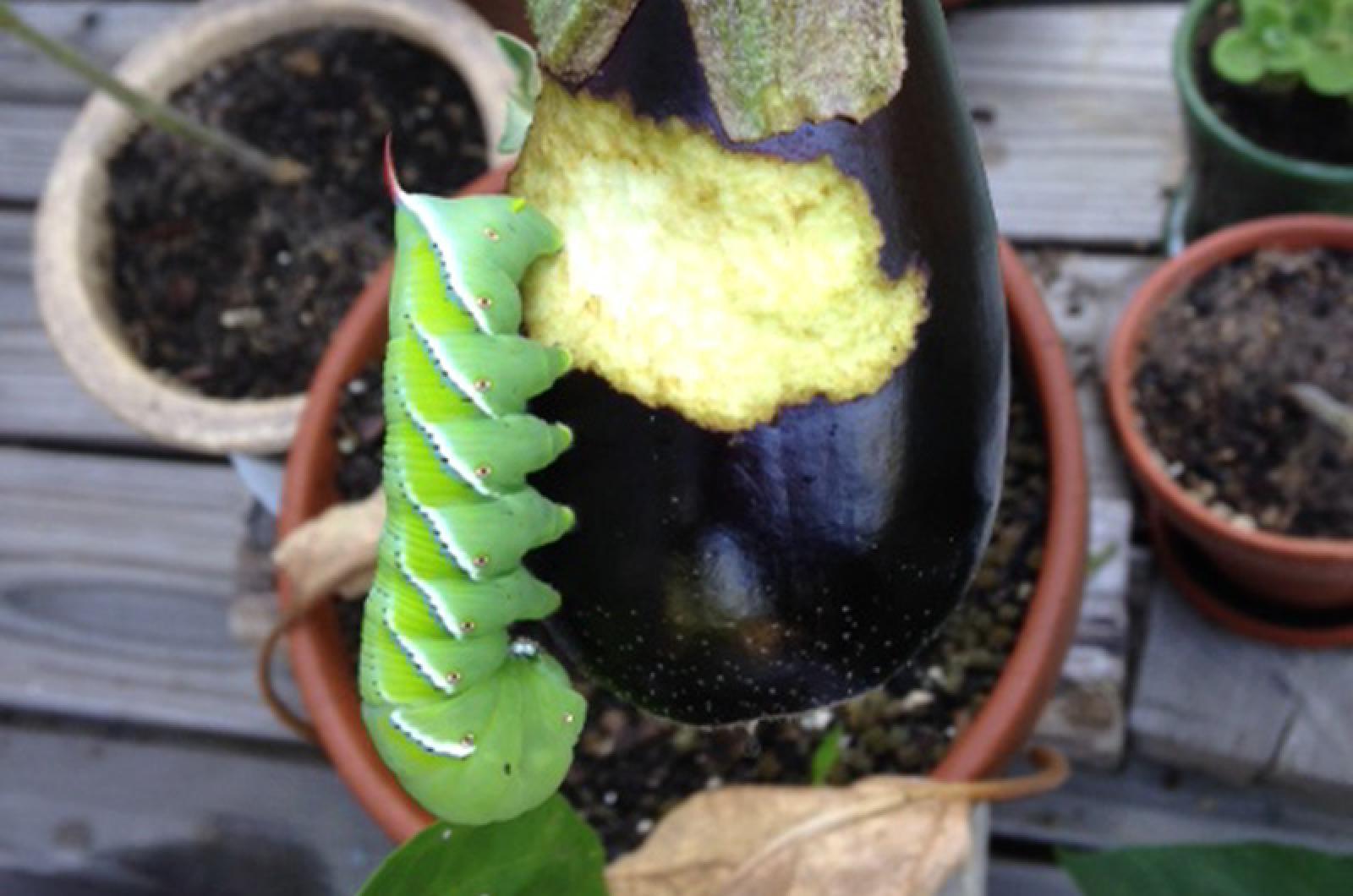Revenge is, perhaps, best served fried. If you have hornworm caterpillars on your plants and are an adventurous eater, here is a suggestion to rid your veggies of this green monster. Get cooking.
Two varieties of hornworms are commonly found in your garden, including tobacco and tomato hornworms. Differentiate them by the color of their horn — red for tobacco and blue/black for tomato — and the white markings on their body — seven for tobacco and eight for tomato.
They are, paradoxically, both easy to see and easy to miss. These giant caterpillars grow to about three inches and are a luminescent green, but blend in with the plants on which they feed. They are so camouflaged, in fact, that some gardeners recommend using a black light at night to find them, since they also bioluminesce, or glow.
Hornworm caterpillars are voracious eaters, but only plants in the nightshade family will do for them. They, like me, enjoy tomatoes, potatoes, eggplant and peppers. Eating copious amounts of leaves, stems and fruit, they are direct competitors for your harvest. Their genus name, Manduca, means glutton. And there is no denying hornworms these vegetative pleasures, as they will starve before eating other foodstuff.
But humans can turn the (dinner) tables on these gorgers. It turns out that both colossal caterpillars are edible and, some say, delicious. If insects are the new protein, then consider hornworms for your next party (though you might not be invited back).
Aficionados of this wild food note that they are “ridiculously rich in chlorophyll.” Most recipes suggest frying them up as you would green tomatoes, in a recipe similar to the one popularized by the fictitious Whistle Stop Café, the Alabama diner famous in the novel by Fannie Flagg.
Simply fry caterpillars for four minutes in hot oil, taking care not to rupture the creature’s cuticle. This delicacy is described as tasting just like those fried green tomatoes with a hint of shrimp and the consistency of soft shell crabs. Modern caterpillars-eaters are not the first to sample hormworms. Native Americans were believed to string them onto a necklace and eat them as travel food.
If you can’t bear to consume them, they are a good protein source for chickens and other insect-eating pets. These caterpillars can also be collected and used for educational purposes. They are fascinating to watch pupate from a caterpillar to a moth.
Collect them and set up a tank with dirt, since hornworms pupate in soil. They are ready to pupate after their fifth instar — just prior to this there will be a dark pulsating line (their aorta) that will appear at the midline of the caterpillar. The hornworms will also get restless, sluggish and stop eating. With proper conditions, it will take about 18 days before a sphinx moth emerges.
A truly versatile fiend and food, it seems that hornworm caterpillars are definitely destined to share our backyard, and if you are not offended by caterpillar crunching, perhaps even our plates.
Suzan Bellincampi is director of the Felix Neck Wildlife Sanctuary in Edgartown, and author of Martha’s Vineyard: A Field Guide to Island Nature.




Comments (5)
Comments
Comment policy »